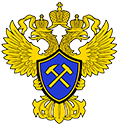COMPOSITION OF SHEETS OF THE RUSSIAN FEDERATION STATE GEOLOGICAL MAP, SCALE 1: 1000 000
Since the mid-1990s, the PMGE has been working in the Arctic to create state geological maps at a scale of 1: 1,000,000, the third generation.
These works implement the State Program (Gosgeolkarta 1000/3) forming a single geological and mapping information base of the federal level in the field of subsurface use.
Within the framework of this program, since 1993 PMGE has begun the work on a comprehensive geological and geophysical study of the area of sheets U-37-44 (Franz Josef Land and the adjacent shelf).
The works were carried out in three directions - aerogeophysical, sea and land, each according to a separate project.
According to the existing practice, the work began with aerogeophysical surveys. The work was carried out by the team of PMGE geophysicists using the AN-30 aircraft, and from 1998 to 2000 - using the flying laboratory IL-38.
The complex of aerogeophysical works also included the radar survey of the islands of the archipelago, which made it possible to determine the thickness of the ice cover and make a map of the subglacial relief. The individual findings are, in fact, a geographical discovery.
Based on the results of aerial survey of scale 1: 500 000, an anomalous magnetic field map was made.
Based on the results of the ice survey, a map of the gravitational field was created.
The complex of marine geological and geophysical works carried out on the research vessels "Professor Logachev" and "Academik Karpinsky" included continuous seismoacoustic profiling, seismic sounding, on-line gravimetric measurements and bottom sampling by shock tubes and bottom scoops.
The breakthrough in the history of geological studies of Franz Josef Land was the airborne research conducted in 2000-2001. About 100 islands were investigated, of which 80 were bleach spots for geologists.
Airborne helicopters of the Vorkuta border guard detachment
were stationed for airborne operations, based on the Nagurskaya border guard
post.
At each point, the radiation background and natural radioactivity of rocks were surely measured, samples of water, soil, vegetation, and rocks were selected for geochemical, environmental and other types of research. In 2006, landing geological work was carried out from board the research vessel "Vilnius".
The result of the complex of all works was new data on stratigraphy, magmatism, minerals, environment of the archipelago, which allowed making a set of maps characterizing all aspects of the geological structure of the archipelago and the adjacent shelf. The works are completed by the publication of the sheets U-37-40 and U-41-44 of the State Geology Map (Gosgeolcarta).
Since 2007, the Northern geological prospecting party of the PMGE has started work on compiling the third generation State Geology Map for a group of sheets covering the Severnaya Zemlya archipelago, the eastern part of the Kara Sea, the north of the Taymyr Peninsula, and the northwest of the Laptev Sea.
As part of this work, the party staff took part in 2007 in the Higher School of Economics work upon "Arktika-2007" on board R / V "Akademik Fedorov", carrying out landing and sea operations on the T-45-48 sheet area, as well as on the Schmidt Island and Komsomolets Island (archipelago Severnaya Zemlya).
.
The complex of offshore works included seismoacoustic
profiling, bottom sampling, bituminological studies. Bottom sampling was carried
out by buckets and shock tubes with sampling for granulometric, geochemical,
mineralogical, petrographic, paleontological, isotope, gas-geochemical,
environmental studies.
A method was developed and magnetometric works were carried out in the water
area at shallow depths from the side of a small vessel on an air buffer
"Khivus-10".
To carry out the work, the R/V "Fridtjof Nansen" was chartered. The landing on the coast and the islands was carried out by a ship on the air buffer "Khivus".
Land operations included geological routes, making
sections, schlich, geochemical, hydrogeochemical, eco-geological sampling,
radiometric observations, magnetometric profile works to verify aeromagnetic
anomalies.
Based on the results of the study of bottom sediments composition, special sections, maps and schemes were compiled (composition of the bottom-stone material, composition of the residue fraction, composition of sorbed gases, bitumen and organic carbon content, spore-pollen and microfaunistic analyzes)
In 2011, PMGE completed the Gosgeolarka package at the scale 1: 1,000,000 for T-45-48 sheets (the northern part of the Taymyr peninsula, the southern part of the Severnaya Zemlya archipelago and the eastern part of the Kara Sea).
Based on the results of determining the age of detrital zircons, the stratigraphic scheme for the barren Precambrian strata developed in the area of work has been substantially modified.
The prospects of hydrocarbons (according to D2 category) are estimated at about 500 million tons of standard fuel in the studied area.
In 2014-16 years the Northern Party "PMGE" carried out sea and land geological and geophysical works on sheets S-44-45 (Dixon).
Marine works cover the waters of the Kara Sea, the Pyasino Gulf, the Yenisei Bay, Ovtsyna. The set of geophysical works included: - hydromagnetic profiling, seismoacoustic profiling (LF), seismoacoustic profiling (HF).





